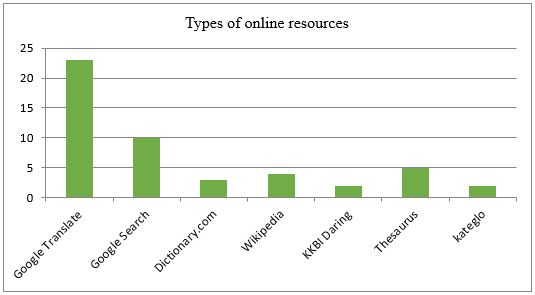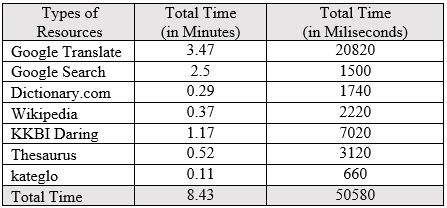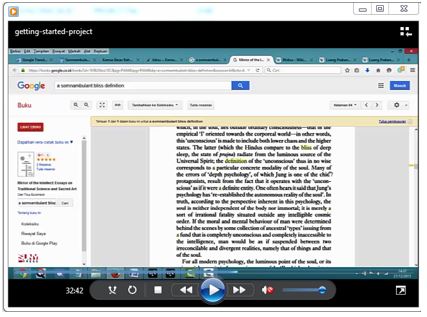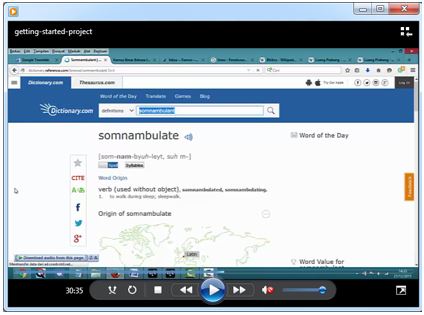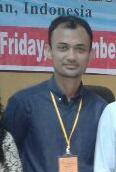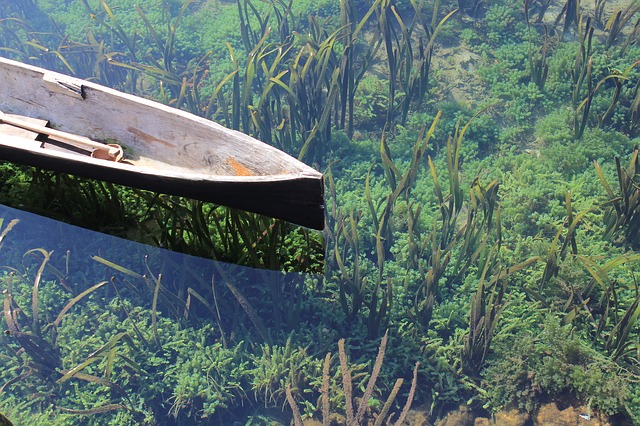
July 2016 Issue
Read, Comment and Enjoy!
Join Translation Journal
Click on the Subscribe button below to receive regular updates.
Consulting External Resources during Post-Editing a Machine Translated Tourism Text by an Indonesian Translator
- Details
- Written by Taufik Afdal

ASBTRACT
It is undeniable that nowadays translation technology such as Google Translate plays a fundamental role in increasing translators' productivity. In addition to that, online references such as Google Search and online dictionaries are other media that help a translator resolve translation problems. This study therefore aims to clarify the online resources consulted by an Indonesian professional translator during the process of post-editing machine translated text. To help achieve these objectives, a professional translator volunteered to participate in this study, and tourism text was chosen as the object of the research. To collect the data, a Camtasia screen recorder was used. Though several studies have proved that consulting online external resources is more helpful in the translation process than in post-editing, this research discovered that the participant used external resources in post-editing machine translated text in a significant way. The data showed that Google Search, Google Translate, Thesaurus and Wikipedia were respectively the four most dominant online resources consulted by the translator during the process of post-editing.
Keywords: Machine translation, external resources, post-editing.
1. Introduction
It goes without saying that online references are today's translator's companion in coping with translation problems. The use of online resources as a problem solving strategy in translation is supported by Gopferich (2010). Given the ubiquity of the web, with its ease of access to online data and the apparent comprehensiveness of the resources it offers, it represents a natural choice for translators to support their cognitive and knowledge-based activity (Austermühl, 2001). In addition, Austermühl (2001:38) has stated that the Internet is 'significantly affecting the way translators work today', in both the 'way they handle orders' as well as 'how they search for linguistic and encyclopaedic information'.
As regards competencies that should be acquired by a translator, web-searching skill is another important qualification a translator must have. This skill is called translators' information competence—also referred to as "documentary competence", "research competence" or "instrumental competence" in the translation studies literature— which is typically situated within multidimensional notions of translation competence (Raido, 2011:58). It involves the skills in searching effectively certain words or phrases in a search engine.
Supporting this argument, Raido (2014:49) states that for translators who need to retrieve expert information from the web as part of their profession, understanding the process of information searching therefore becomes essential for successful web search performance, which, in turn, may lead to successful translation performance. He adds that, given translation is very much about knowledge dissemination, the translator's role as "an information user, processor, and producer" (Pinto Molina 1999, 2000, 2001) highlights the need for online documentary research skills in the processes of decision making and problem solving.
Fulford (2004:1) argues that "it is certainly true that the advent of the Internet, and the World Wide Web in particular, has put at the disposal of translators an ever-increasing array of online tools and web-based language resources". He adds that these tools and resources offer opportunities for supporting translators at various points in their workflow, including work procurement, topic research, client liaison, terminology identification and verification, and the production of draft translations (Fulford, 2004:1).
2. Related Work
There have been a number of studies conducted regarding the use of the Internet as a source in the translation process, one of which was by Alonso (2015). He discovered that 94.9% of his 302 participants used Wikipedia to some extent when translating. His respondents' overall perception of Wikipedia was "good" or "very good" in terms of usefulness when translating, reliability and ease of use. Daems et al. (2015) compared the effectiveness of consulting external resources in translation and post-editing processes. Their findings support Plitt and Masselot's study (2010) in Daems et al. (2015), where the overall time needed to translate a text was significantly higher for translation than for post-editing. Their research found that the time spent with external resources significantly increases the total time needed to translate a word, indicating that even though such resources might help translators solve translation problems, this is at the cost of overall productivity. With regards to online resources usage, their study found that amongst the resources mostly visited by participants are concordancer, search, dictionary, synonyms, news, encyclopedia, MT (machine translator), termbank, spelling, and conversions.
Another piece of research, conducted by Palpavic (2007) in Raido (2015), found that a bilingual dictionary and Google were the two primary sources of reference in both directions. He found, however, no major differences between the research behaviours of the novice and the professional translators of his study. Both groups of subjects appeared to consult monolingual and bilingual dictionaries for purposes similar to those identified so far—that is, to confirm a hypothesis on meaning, check or monitor the adequacy of a proposed translation variant, and find or inspire a new variant.
With reference to the above-mentioned phenomenon, this study attempts to clarify which specific websites a professional Indonesian translator resorted to during the process of post-editing a tourism machine translated text. Post-editing, in its own context, has become a research interest for many translation scholars, particularly in Europe. Little work has been done to investigate this process in the Indonesian context. Though a number of studies, such as Daems (2016), showed that using online resources is more usable and plays a larger part during the translation process, this study showed that, regardless of whether the text has been translated automatically by a machine translator, the translator still relies on the functionality of online resources.
3. Research Methods
a. Participant
Since this study is descriptive and explanatory qualitative research, then one single participant is considered to be enough. The participant in this study is a professional translator with over ten years' experience in translation and five years in the interpreting industry. In addition to that, her profile shows that she is a senior member of the Association of Indonesian Translators (HPI) with strong linguistic competence. These criteria suit the post-editor competencies as proposed by O'Brien (2002:102).
b. Text Selection
As there has been no tourism text genre as the object of research in post-editing process to date, in this study, therefore, a tourism text is selected. The reason for choosing a tourism text is because it has particular difficulties for a translator to deal with, considering its unique linguistic characteristics. Out of many tourism texts, an online resource was chosen. The website www.lonelyplanet.com is considered to be a dominant website visited by tourists, and it does not provide other languages (including Indonesian), in any of its content. Since there are many articles associated with travel and tourism, the topic of destination Asia was chosen, regarding Asian culture. To filter the texts available, their complexity levels are measured using a readability test, namely: ATOS level, Flesch Kincaid, SMOG, and Lexile Measure. This study, to the best of the researcher's knowledge, is the first one to apply this combination of four measures for translation or post-editing process research. Having measured the complexity level, the text, consisting of 253 words, is in between 1200-1300 L, based on the Lexile Measure used. It was considered that a text entitled "Introducing Luang Prabang" suited the criteria, consisting of 12 sentences, with one phrase as its title.
c. Experiment Set-Up
The participant was informed about how to use Camtasia and Translog II during the process of post-editing. The source text was copied into Translog Windows for the translator to work on, while the Google translated text was copied into the Translog working bar. Translog, however, is not the main instrument in this study, since this study focuses only on the online resources consulted by the translator, which is recorded by the Camtasia Studio software.
d. Data Collection
Göpferich (2010) states that external resources are usually registered by means of screen capture software such as Camtasia Studio. Supporting Göpferich's finding, therefore, the screen recorder application Camtasia was used in this study. Realizing that the recording does not provide reasons for using certain websites, we used a post-production questionnaire, which functions as supplemental information on the frequency of using those websites and their contributions towards the translation or post-editing process. The questionnaire consists of the translator's background information and questions on the three particular websites the participant visited during the process of post-editing. There are 15 questions in the questionnaire. The first five concern her profile. Another set of 10 questions is about post production, and were given after the translator had finished the task.
4. Findings and Discussion
The recording of Camtasia is the main data in this study. The video recording shows which particular websites were visited during the process of post- editing. Technically speaking, due to the fact that Camtasia offers a free 30-day trial, the original recording, which is still in .trec format, is to be converted into mpeg format. This makes it easy for the researcher to analyze the video in a repeated playback.
The recording showed that the participant spent 53 minutes 07 seconds in post-editing the Google translated tourism text. Regarding the techniques or strategies applied by the translator during post-editing is not the main concern in this study, since it focuses only on the external resources consulted by an Indonesian translator. The figure below shows the number of hits by the translator during the process of post-editing.
Figure 1.: Frequency of Visiting Websites during Post-editing Process
The above figure shows that the number of visits made by the translator during the process of post-editing is 46 in total. The recording shows that, from the start, the translator used Google Search, which indicates the high reliance on its use for information retrieval. As can be seen from the above figure, the external resources that were visited were: Google Translate with 23 visits (50%), Google Search with seven visits (15%), dictionary.com with three visits (6,5%), Wikipedia with four visits (8,7), KBBI Daring with two visits (4,4%), thesaurus.com with five visits, and Kateglo with two visits. These websites were used interchangeably. When the translator could not find particular equivalences, she resorted to other resources at the same time, going back to the same websites to make sure that the meaning was considered to be acceptable in the post-edited version.
In addition to those websites, the questionnaire also revealed that the translator is used to consulting google.com, dictionary.com, kateglo.com, badanbahasa.kemndikbud/kbbi, and translate.google.com on a workday basis. These websites are ordered based on their top frequency, and in an Indonesian to English context or vice versa. These websites automatically open in the translator's browser, for she had set the browser tabs in such a mode.
It is also important to rationalize the duration of each website visit in order to take a look at the difference of the frequency of visits compared to the total duration.
Table 1: Duration of Visits of Each Online Resource
Comparing the total time taken to post-edit the text and the total time visiting online resources, it can be concluded that the translator took 44.64 minutes to post-edit the text, while 8.43 minutes was spent on researching information online. This indicates that consulting online resources does not significantly consume the translator's time in post-editing.
The table above shows that Google Translate is the website where the translator spent the most time. This duration is in line with Figure 1 above. The least visited website for the shortest duration is Kateglo. This is due to the fact that Kateglo does not provide specific information with regard to Indonesian words and definitions.
KBBI Daring was consulted by the translator longer than other bilingual online dictionaries such as dictionary.com and Thesaurus. The duration of KBBI is not the same as the number of visits in Figure 1. This means that the translator spent some time in understanding the definition in an Indonesian context.
The recording then shows that some of the words searched in Google search engines were: frangipani, luang prabang, a somnambulant wisdom in Indonesia, scarlet flowers, a somnambulant bliss definition, a somnambulant wisdom, a somnambulant bliss.
Somnambulant, for example, was searched in many ways. The translator found it hard to get the equivalent of this word, thus she typed in the Google search engine: a somnambulant wisdom in Indonesia, a somnambulant bliss definition, a somnambulant wisdom, a somnambulant bliss. The phrase somnambulant bliss is found in sentence no. 7. Below is the excerpt of sentence no. 7.
Sentence no. 7
Some of the search results for the word of somnabulant in google search lead to online google books, as depicted in the picture below:
It needs a deep understanding to comprehend particular information in Google Books online. This can only be done by professional translators who are familiar with English either as a source text or target text. Google Books online is categorized into Google Search in this study. This is because Google Books online showed up as the results of Google Search.
The word somnambulant was also searched in dictionary.com, as depicted in the picture below:
After visiting dictionary.com, the translator went on to Google Search. Moving on to Google Translate, the translator inserted: blessed, sealed, quiet, benevolence, crumble, a wide berth, lull, bliss, teems, jaded, showpiece, antiquity, resplendent, disposition, foremost, brew, brew of gleaming, a somnambulant bliss, crumbling French Provincial Architecture, temple, even score, provincial, transit.
In particular, for the phrase French Provincial Architecture, the translator used Google Translate many times. This phrase is found in sentence no. 7 as below:
Sentence no. 7
The translator finally decided to post-edit French Provincial Architecture into bangunan reruntuhan bergaya arsitektur Perancis, this phrase indicating her stylistic preference and linguistic competence.
In Wikipedia alone, the participant searched for information on luang prabang and bhiksu. She first opened the English version of Wikipedia on luang prabang and then compared it with the Indonesian version. This is typical when someone is using Wikipedia in a translation setting. Though the information provided is not as complete as the original text, it may help the translator in some ways.
In KBBI Daring, the translator searched for the words bus, and biksu. While in Kateglo, she searched for biksu. In thesaurus.com, the participant searched for showpiece. In dictionary.com, the participant searched for brew,somnambulant, and berth. Some of these monolingual dictionaries are helpful in terms of finding definitions and their explanations.
The second instrument of the research was the post-production questionnaire. Asked about each of their functions, the translator stated that google.com is used as a tool to seek any information available resulting from its searches that could help in the process of translation, dictionary.com is used as a tool to understand or search for meanings in English, kateglo.com is used as a tool to understand or seek definitions of a word in Indonesian, KBBI Daring functions the same as Kateglo, which is a tool to understand or seek definitions of a word in formal Indonesian, while google.translate.com is used as a supplementary aided dictionary for that language pair. Question no. 4 on how useful online resources are during the process of translation, the participant stated that "Everything is at your fingertips".
Question no. 5 of the post-production questionnaire revealed that the translator did not use Wikipedia directly, but she clicked on Wikipedia for certain words or phrases as a result of the Google search engine for that particular website. Regarding the frequency of its use, the translator stated that "almost oftentimes. Every time I look for definitions or information of a particular word or phrase in the Google search engine which shows Wikipedia, than Wikipedia tends to be the first link to open and read". In terms of its contribution, she stated that Wikipedia is beneficial for information/understanding/definitions of a certain word/phrase.
In question no. 6 on the frequency of the use of Google Search in the translation process, she revealed that "No other search engine is used in this area but Google. It cannot be argued that every time I search for information, the Google search engine is the most reliable and used". Regarding its contribution, she stated that it is used for definitions/understanding/information retrieval of particular words/phrases.
5. Conclusion and Recommendations
This study has presented the opportunity for trainee translators and novice translators to use such online search strategies when dealing with the translation difficulties of certain types of information. The findings also suggest that the use of Google Search, monolingual dictionaries such as dictionary.com and thesaurus.com in an English language context and KBBI Daring in an Indonesian context are helpful in contributing to the translator's productivity. However, this study is limited to a tourism text, and was conducted on the post-editing process. Therefore, it is suggested that future work should touch on consulting external resources for the translation process of the same language pair or vice versa with more varied text types, with more than one participant. Suffice to say that this paper, without assessing productivity in general, helps uncover ways to better seek solutions for translation problems.
There may be questions about what magical tools a translator uses during translation. The questionnaire revealed that the translator is used to using offline dictionaries in addition to online resources, as described above, which can be the answer to that assumption. Those offline and printed resources that are oftentimes used by the translator are: Kamus Lengkap Indonesia-Inggris, by Alan M. Stevens and A. Ed. Schmidgall-Tellings, Kamus Inggris-Indonesia, by John M. Echols and Hassan Shadily, and the Oxford Advanced Learner's Dictionary. It is obvious, however, that despite having these resources, a translator must also be knowledgeable and decisive in terms of picking up the right words for particular pairs. This study, however, needs further work. Since there was only one participant, it is suggested that in the future, this study is done on a larger number of professional translators.
References
Alonso, E. (2015). Analysing the use and perception of Wikipedia in the professional context of translation. The Journal of Specialised Translation Issue 23 – January 2015. Retrieved from http://www.jostrans.org/issue23/art_alonso.pdf.
Austermühl, F. (2001). Electronic Tools for Translators. Manchester: St. Jerome.
Daems, J. , et al. (2016). The effectiveness of consulting external resources during translation and postediting of general text types. In New Directions in Empirical Translation Process Research: Exploring the CRITT TPR-DB. In New Frontiers in Translation Studies p.111-133
Fulford, H. and Zafra, J. G. (2004). The uptake of online tools and web-based language resources by freelance translators: Implications for translator training, professional development, and research. Retrieved from http://www.aclweb.org/anthology/W04-1406.pdf
Göpferich, S. (2010). The translation of instructive texts from a cognitive perspective. In F. Alves, S. Göpferich, & I. Mees (Eds.), New Approaches in Translation Process Research (pp. 5–65). Frederiksberg: Samfundslitteratur.
O'Brien, S. (2002). Teaching post-editing: A proposal for course content. In 6th EAMT Workshop 'Teaching Machine Translation', Manchester, pages 99–106. Retrieved from http://mt-archive.info/EAMT-2002-OBrien.pdf
Pinto Molina, M. and D. Sales Salvador. (2007). A Research Case Study for User-Centred Information Literacy Instruction: Information Behaviour of Translation Trainees. In Journal of Information Science, 33 (5): 531-550.
Raido, V.E. (2014). Translation and Web Searching. New York and London: Routledge.
